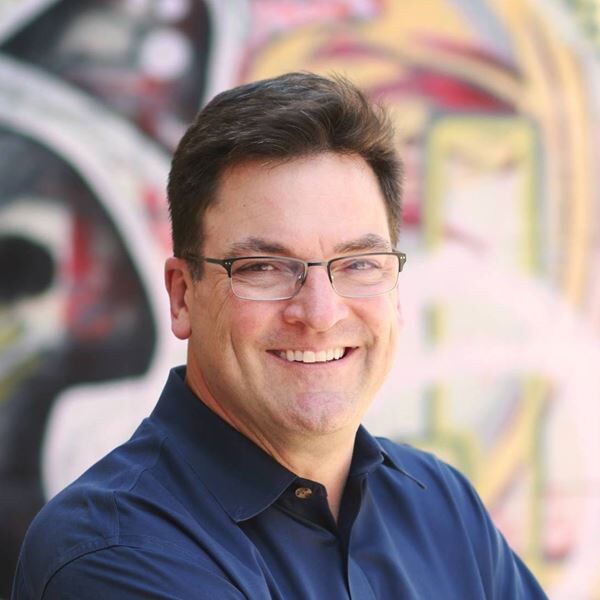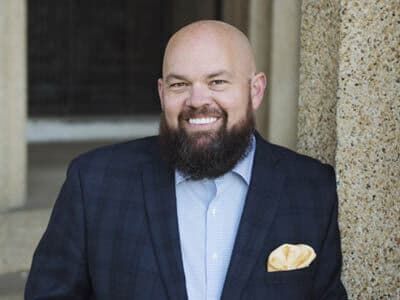Editorial Roundup: United States
News > National News

Audio By Carbonatix
10:53 PM on Monday, September 22
By The Associated Press
Excerpts from recent editorials in the United States and abroad:
___
Sept. 19
The New York Times says the Trump Administration is trying to punish free speech
A founding principle of the United States, enshrined in the Constitution’s opening amendment, is that our republic depends on citizens’ freedom to disagree with one another. They need to be able to do so intensely, on matters of life and death, including war and divisive modern issues like abortion, gun safety and health insurance. There are limits to free speech, yes, but they involve edge cases, like falsely shouting fire in a theater or inciting an imminent act of violence. If the American ideal of freedom means anything, it is that Americans can engage in an extremely wide range of political speech, including the tasteless and the offensive.
President Trump is himself a purveyor of tasteless and even threatening language, speaking in ways that no previous president did. Yet his own exercise of his First Amendment rights has not stopped him from encroaching on those of others. He has punished universities, immigrants, law firms, federal prosecutors, military leaders, national security officials and others for voicing opinions with which he disagrees.
Now he is taking his campaign against free speech to a new level by using the assassination of Charlie Kirk as a justification to promise the repression of groups that he describes as liberal. Mr. Trump’s aides are drafting an executive order that could come as soon as this week, The Times reported, and it will most likely target left-leaning organizations. On Monday, Vice President JD Vance mentioned both the Ford Foundation and George Soros’s Open Society Foundations, saying that they benefited from a “generous tax treatment,” the same tax treatment that benefits nonprofit groups like religious charities and the National Rifle Association Foundation.
The intimidation campaign is already having an effect. Federal officials have urged companies to fire workers who have criticized Mr. Kirk, and some have done so. In a direct exercise of government influence, Brendan Carr, the chairman of the F.C.C., threatened Disney for remarks that Jimmy Kimmel made on his late-night ABC show. “We can do this the easy way or the hard way,” Mr. Carr said. He also urged television stations to stop broadcasting the show. Two major station owners quickly did so, and ABC has suspended the show indefinitely.
As we wrote last week, we are horrified by the killing of Mr. Kirk, and we mourn his death. The evidence suggests that he was murdered for his views, which is the most fundamental violation of free-speech principles. We vehemently disagree with people who suggested that Mr. Kirk bore any responsibility for his own shooting. As Spencer Cox, Utah’s Republican governor, said afterward: “We need more moral clarity right now. I hear all the time that words are violence. Words are not violence. Violence is violence.” Yet it is the Trump administration, not the left, now violating Mr. Cox’s standard.
Mr. Trump’s promised crackdown depends on the false premise that liberal and nonpartisan groups are part of a far-left conspiracy that promotes violence against conservatives. In truth, the country has experienced a surge of political violence and plots that have targeted both Democrats and Republicans, including Mr. Kirk, Mr. Trump, Justice Brett Kavanaugh, Representative Nancy Pelosi, Gov. Gretchen Whitmer of Michigan, Gov. Josh Shapiro of Pennsylvania and two state legislators in Minnesota. As this list suggests, the highest-profile targets show no clear partisan pattern.
Mr. Trump and his aides tell a very different story — and a false one. They claim that political violence comes mostly from the left. “The radicals on the left are the problem,” the president said last week. In fact, multiple data sources show that neither side has a monopoly on political violence, but it is more likely to come from the right. Between 2015 and 2024, 54 percent of ideologically connected killings were committed by people on the far right, according to the Anti-Defamation League. By comparison, 8 percent came from the political left.
Conservatives and progressives alike should reflect on whether the nasty and often personal rhetoric of today’s politics may have contributed to an atmosphere in which unstable or angry people become more likely to commit violence. Still, even that scenario is very different from one in which political groups are organizing and helping commit the violence. There is zero evidence that left-wing groups played a role in Mr. Kirk’s killing or in other recent violence against Republicans. “Absent additional facts, there was one person responsible for Charlie Kirk’s assassination,” Mike Pence, Mr. Trump’s former vice president, pointed out on Thursday.
If anything, many elected Democrats and prominent progressives have clearly and consistently condemned Mr. Kirk’s killing in ways that prominent Republicans failed to do after attacks on Democrats. After the attack at Ms. Pelosi’s home, which included a brutal assault of her husband, Paul, Mr. Trump himself and other prominent Republicans mocked the victim and spread absurd conspiracies that the episode was staged. After the shooting of two Democratic legislators and their spouses in Minnesota, Senator Mike Lee, a Utah Republican, bizarrely blamed “Marxists,” while Laura Loomer, an influential Trump confidante, falsely blamed “goons” working for Gov. Tim Walz, the Minnesota Democrat.
These are terrible things to say. They are not crimes, however, and they are certainly not grounds for a government crackdown against conservative groups. The Trump administration is now targeting other groups for lesser sins and maybe no sins at all. Mr. Vance’s specific (and tenuous ) claim about the Ford Foundation and the Open Society Foundations was that they helped to fund The Nation, which published an article lambasting Mr. Kirk after his death. If that article — whatever you think of it — is grounds for government punishment, the First Amendment has no meaning.
We urge Mr. Trump and his aides to remember the free-speech criticisms that they and other conservatives have often made of progressives over the past decade. Republicans have excoriated the left for its attempts to conflate personal safety with contestable ideas and to quash political expression on Covid-19, race, trans issues and other subjects. Conservatives have been correct about some of these excesses, too. In his Inaugural Address in January, Mr. Trump promised to “bring back free speech to America.” Mr. Vance, while speaking in Munich in February, excoriated European countries for restricting speech and promised, “Under Donald Trump’s leadership, we may disagree with your views, but we will fight to defend your right to offer it in the public square, agree or disagree.”
Instead of living up to these principles, the Trump administration and its allies are attempting to restrict speech in ways that are more extreme than anything that Democrats have done. Stephen Miller, a top White House aide, has claimed the existence of a “vast domestic terror movement” on the left and denigrated the Democratic Party as a “domestic extremist organization.” Attorney General Pam Bondi has suggested that a business that refused to print signs promoting vigils for Mr. Kirk deserved to be prosecuted. Representative Clay Higgins of Louisiana called for permanent social-media bans on “every post or commenter that belittled the assassination of Charlie Kirk.” Mr. Higgins, it is worth noting, is one of the congressmen who previously criticized social-media companies for suppressing conservative speech — and who belittled the attack on Mr. Pelosi.
If Mr. Trump refuses to stand up for the basic American right to disagree without fear of oppression, others still can. An executive order that follows through on the threats that he and his aides have made would be clearly unconstitutional. And it would deserve an immediate injunction from the federal courts and a swift rejection from the Supreme Court. The ability to disagree with other people on raw, difficult issues, without fear of repression, is the essence of American freedom.
ONLINE: https://www.nytimes.com/2025/09/19/opinion/trump-freedom-of-speech-crackdown-kimmel.html
___
Sept. 21
The Wall Street Journal says it's a good idea to cut drug costs
The White House has proposed good and bad ideas to reduce drug costs. Among the better ones is a reform of the obscure 340B drug program, which enriches large hospitals at the expense of patients. Cue the protests from the hospital lobby.
The 340B program is a classic example of a well-intended policy that has caused unintended harm. Congress established the program in 1992 to help hospitals that disproportionately serve Medicaid and low-income patients. Such hospitals are allowed to buy outpatient drugs at steeply discounted rates, on average about 45% of a drug’s list price.
Hospitals then charge insurers and Medicare a large mark-up on the drugs when their pharmacies administer them to patients, pocketing the difference. Spending in the program has surged 11-fold since 2010 and exceeds Medicaid pharmaceutical spending.
One culprit is ObamaCare’s Medicaid expansion, which made more hospitals eligible. Some 2,700 hospitals now qualify for discounts, up from 45 in 1992. These include such well-off hospitals as the Cleveland Clinic, New York’s Northwell Health system, Beverly Hills’s Cedars-Sinai and New York Presbyterian.
As the Congressional Budget Office explained recently in a report, the program has encouraged consolidation among providers since outpatient clinics and physicians owned by eligible hospitals benefit from discounts. So do pharmacies, which have 212,000 contract arrangements with 340B hospitals to administer medicines. That’s up from 1,700 in 2010.
Studies have found doctors employed by 340B hospitals are also more likely to prescribe higher-priced drugs. Why? Because the hospitals and their pharmacy partners reap bigger discounts on them than they do on generics. The result: Private insurers and Medicare spend more on drugs.
As the program currently operates, a hospital can also claim the discounts for drugs administered to former patients they aren’t currently treating. Consider a privately-insured patient referred by a hospital’s primary care doctor to an outside rheumatologist. If the patient fills a medicine prescribed by that rheumatologist at one of the hospital’s contracted pharmacies, the hospital and the pharmacy can claim the discount. Hospitals and pharmacies employ firms to scour patient records and prescriptions to maximize discounts.
Hospitals are supposed to use the discounts for low-income patients, but a report this spring by Senate Republicans found little evidence they do. A study this year by consulting shop Magnolia Market Access estimated that a third of the discount dollars are directed to hospitals’ financial portfolios—bonds, stocks, etc.
Some hospitals have signed deals with minor-league and college sports teams for naming rights to stadiums. Northwell has launched a film company, supposedly to help with marketing. The discounts have also given hospitals more money to acquire physician practices. Such consolidation has increased prices and insurance premiums.
The nearby chart shows that hospital prices have increased 88% over the last 15 years, compared to 48.4% for the overall consumer-price index, 38.4% for prescription drugs and 29.5% for physician services. To offset the growing hospital discounts, drug makers raise prices.
Enter the Health and Human Services Department, which has announced an experiment to prevent hospitals from gaming the program to claim more discounts. Instead of receiving up-front discounts, hospitals would have to file claims with manufacturers for rebates, though only for the 10 drugs in the Inflation Reduction Act’s first round of price controls.
One goal is to ensure that drug makers don’t have to pay discounts twice on the same drugs. Another is to provide more transparency by requiring hospitals and pharmacies to validate the patients and prescriptions for which they are claiming discounts. The government’s current method is trust the hospitals, which want to keep it this way.
The hospital lobby last month all but threatened to sue HHS if it moves forward with its experiment. Some 166 members of Congress, mostly Democrats, demanded HHS cancel its test. It’s amusing to watch progressives like Alexandria Ocasio-Cortez defend big, wealthy hospitals.
On a more constructive note, GOP Reps. Earl Carter (Ga.) and Diana Harshbarger (Tenn.) have introduced legislation that would ensure the 340B program benefits low-income hospitals and patients, as it was intended. Memo to President Trump: This is a better way to lower healthcare costs than importing foreign drug price controls.
___
Sept. 19
The St. Louis Post-Dispatch says America's history mustn't be whitewashed
It’s not easy, but please look at the photograph accompanying this editorial. It shows a formerly enslaved man in Louisiana displaying whipping scars on his back during the Civil War.
Made in May 1863 and widely published two months later, it presented gruesome evidence of slavery’s inhumanity for countless Americans who didn’t necessarily comprehend it before. It has been credited with helping coalesce support for the defeat of the Confederacy and ultimately ending slavery.
More than 160 years later, the Trump administration doesn’t want you to see it.
Bowing to President Donald Trump’s pernicious campaign to recast America’s history through a rose-colored MAGA lens, the National Park Service recently removed the iconic image, titled “The Scourged Back,” from Fort Pulaski National Monument in Georgia.
It’s part of a wider effort to scrub national park sites of materials that promote “corrosive ideology” — which this corrosive administration apparently defines as any reference to slavery, Native American policy and other sins of the nation’s past.
Trump’s authoritarian obsession with commandeering America’s cultural institutions is bad enough when it takes the form of, say, demolishing the artistic value and stature of the Kennedy Center.
But the administration’s zeal to sanitize history as it relates to slavery and the Civil War is singularly noxious. Along with bizarre moves to restore Confederate monuments and military base names (what other nation lionizes a vanquished military enemy?), it attempts to minimize the horror and modern societal relevance of what has aptly been called America’s “original sin.”
When you consider the towering role that strained race relations plays in our national life to this day, it’s clear we are still reckoning with the lingering effects of that sin. But this administration — which likes to pretend, ludicrously, that Black Americans don’t still face racist barriers to success in our society — wants to wave slavery away like it never happened.
And they’re not even doing it openly. The Parks Service purge of unpleasant historical facts wasn’t publicly announced, but was instead uncovered by The Washington Post.
The newspaper reports that the removal of the photo and other materials from multiple Park Service sites was in response to Trump’s executive order from May to scrub material deemed to “inappropriately disparage Americans.”
Among materials slapped with the Orwellian designation of being “out of compliance” with Trump’s edict are displays at Harper’s Ferry related to the 1859 anti-slavery raid led by the abolitionist John Brown. Also targeted is the President’s House Site in Philadelphia, based on the undisputed but apparently inconvenient fact that George Washington kept slaves there.
Why does all this matter in 2025? Because, as The Post reports, the Parks Service is broadly interpreting Trump’s order as applying to such currently relevant topics as racism, sexism and gay rights. As it inevitably must, if the goal is to ignore any societal conflict that might “disparage” American culture.
America’s founding phrase “All men are created equal” wasn’t actualized (even within its own limited construct) when it was written. To the extent that it has become more so today, it’s because we as a nation have, in a continuing if sporadic process, recognized and addressed the shortcomings of our national reality in comparison to our stated ideals. Regarding not just race but religion, ethnicity, class, gender, sexual orientation and other topics, we gradually move closer to realizing that lofty goal.
That process can only continue working when we look at ourselves and our history clearly — scars and all.
ONLINE: https://www.stltoday.com/opinion/editorial/article_ef45d783-cb5f-48d7-8787-a2dd2d124f6d.html
___
Sept. 22
The Guardian says Trump is practicing politics the wrong way and dismantling free speech from within
At Sunday’s memorial for the rightwing activist Charlie Kirk, Donald Trump paid a peculiar tribute. Having quoted Mr Kirk’s words of forgiveness, he put aside the script. “That’s where I disagreed with Charlie,” he said. “I hate my opponents, and I don’t want the best for them.” It was a stark and clarifying admission. Mr Trump does not seek to criminalise hate speech so much as to criminalise speech he hates.
The US is being dragged into a state of emergency. Speech is framed as terrorism. Satire is rebranded as enemy propaganda. Employers punish workers for personal posts. The predictable result is a chilling climate of surveillance and reprisal, in which citizens learn to keep quiet. The assassination is not just being used to police manners; it is being used to reconstruct the public square so that dissent equals disloyalty, and disloyalty is treated as a security threat.
Hannah Arendt warned of the existential peril in blurring the line between truth and lies: then truth doesn’t stand; it becomes optional. Mr Trump’s reported falsehoods about paracetamol and autism will harm mothers, stigmatise families and erode trust in medicine. But in Trumpland such costs are outweighed by the political payoff of pitting supporters against the scientific “establishment”.
His assault is twofold. First, speech is being weaponised through partisan media, online influencers and harassment networks that seek to capture attention while corroding the conditions for open dialogue. Second, state power is weaponised by cowing social media platforms, threatening network licences and politicising information. Handing TikTok to rightwing billionaires is a morbid symptom of democratic decline.
“Authority is to be controlled by public opinion, not public opinion by authority,” said the US supreme court. That defines the first amendment: citizens, not the state, decide which ideas survive, with narrow limits like fraud or defamation. By presuming to define “truth”, Mr Trump subverts self-government. Hate rallies thrive in Trump’s America because, since 1969, speech is unprotected only if intended and likely to incite “ imminent lawless action ”.
The US is a free-speech outlier. Other democracies accept broader, more collective trade‑offs to protect vulnerable groups, maintain public order and prevent incitement and harassment. Each country is different but the bargain is similar. Speech is presumptively free, yet words are considered acts with foreseeable harms. Words can mobilise mobs, direct harassment and orchestrate violence. The point isn’t to shield anyone’s feelings, it’s to make coexistence possible.
Mr Trump has inverted the American model. Rather than robust exchanges under neutral rules, he selectively rewards allies while degrading the conditions of honest debate. All this while the infosphere is saturated with viral lies, making it easier to justify punitive state action “to keep order”. That is how an emergency becomes a system.
The answer is not the censor’s pen nor a free-for-all. It requires resilient democratic plumbing; social media platforms made accountable for publishing harms; and properly defining dangerous conduct. The aim – particularly in the US – must be to preserve free expression as the bedrock of self-government while dismantling the machinery that warps attention toward outrage and partisan mobilisation. Mr Trump’s speech was disgraceful. When power learns to hate its opponents, democracy will fail.
___
Sept. 20
The Washington Post suggests a possible U.S. return to Afghanistan
For nearly 20 years, the Bagram air base stood as the sprawling symbol of American power in Afghanistan and as the heart of the long U.S. military intervention there. The Biden administration secretly evacuated the base on July 1, 2021, a few weeks ahead of its chaotic withdrawal from Afghanistan. The Afghan army left in control of the base surrendered to the Taliban.
Now, President Donald Trump says he wants Bagram back. “We gave it to them for nothing,” he said in in London on Thursday. “We’re trying to get it back, by the way. … We’re trying to get it back because they need things from us.” Good. Bagram is worth pursuing, though not at any cost.
Bagram is strategically important because of its proximity to the border with China and to a nuclear testing range at Lop Nur in a remote part of Xinjiang province. The testing range was long believed abandoned, but there have been reports of increased Chinese military construction activities in the area.
An American military presence at Bagram would also allow the U.S. to conduct counterterrorism operations in a volatile region against the Islamic State-Khorasan terrorist group, which is also at war with the Taliban and has also spread its tentacles into Europe.
What the Taliban wants most from the U.S. is recognition. The country’s seat at the United Nations is still held by the former government. The Taliban would also like to access $7 billion in assets frozen in the U.S. to boost its flagging economy.
Taliban officials don’t sound eager for American troops to return to Bagram. “Afghans have never accepted foreign military presence in their land throughout history,” a senior foreign ministry official, Zakir Jalaly, said. But there’s room to negotiate. As Jalaly pointedly added: “Afghanistan and America need engagement on economic and political relations based on bilateral respect and common interests.”
Trump has leverage. This month, the Taliban’s foreign minister, Amir Khan Muttaqi, and Trump’s special envoy for hostages, Adam Boehler, said they had reached a deal on a prisoner exchange. The Wall Street Journal reported that talks about a small American contingent basing out of Bagram were in the early stages.
Recognizing the Taliban’s government now would be a mistake. The regime’s abhorrent treatment of women and girls and its persecution of ex-government officials are unlikely to stop any time soon. Only Russia has extended full diplomatic relations to the Taliban’s government, but countries such as India and Japan maintain embassies in the country’s capital. It would not be a betrayal of American values to open an embassy in Kabul.
But there’s little reason to believe that the U.S. diplomatic boycott of Afghanistan, more than four years after the Taliban took over, is exerting meaningful pressure that will make the government crack. Other actors are filling the void. Better for Washington to have more influence in Kabul than less.
The return of a small American military contingent to Bagram would be a far cry from the commanding presence that existed before. But it would give the U.S. a toehold in a strategically vital region as competition with China continues.
ONLINE: https://www.washingtonpost.com/opinions/2025/09/20/bagram-afghanistan-trump-taliban-negotiate/






